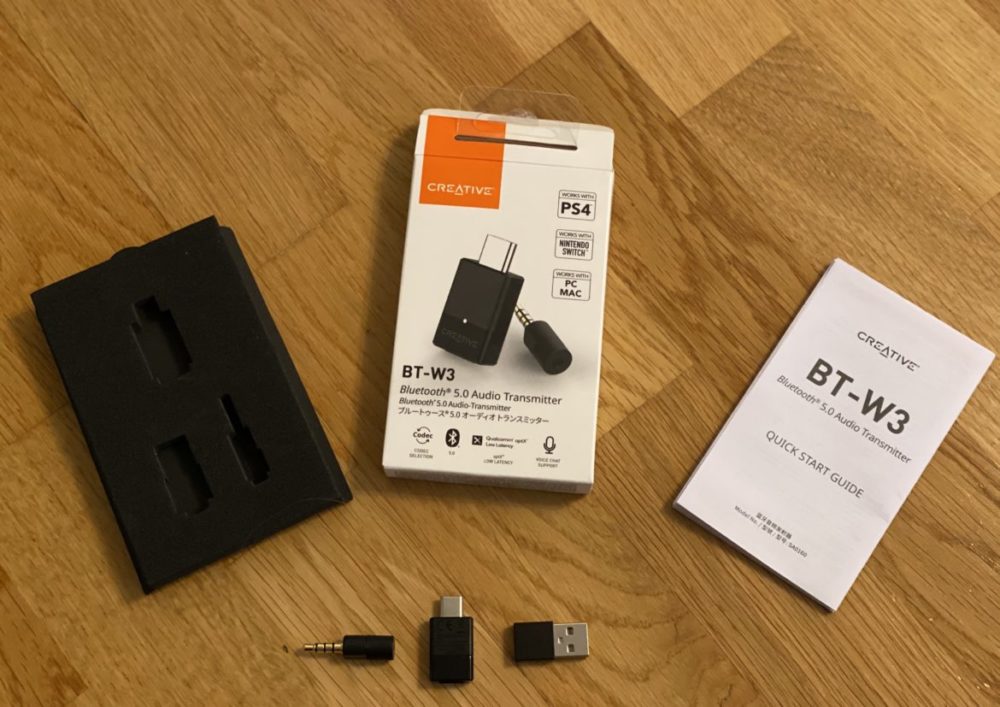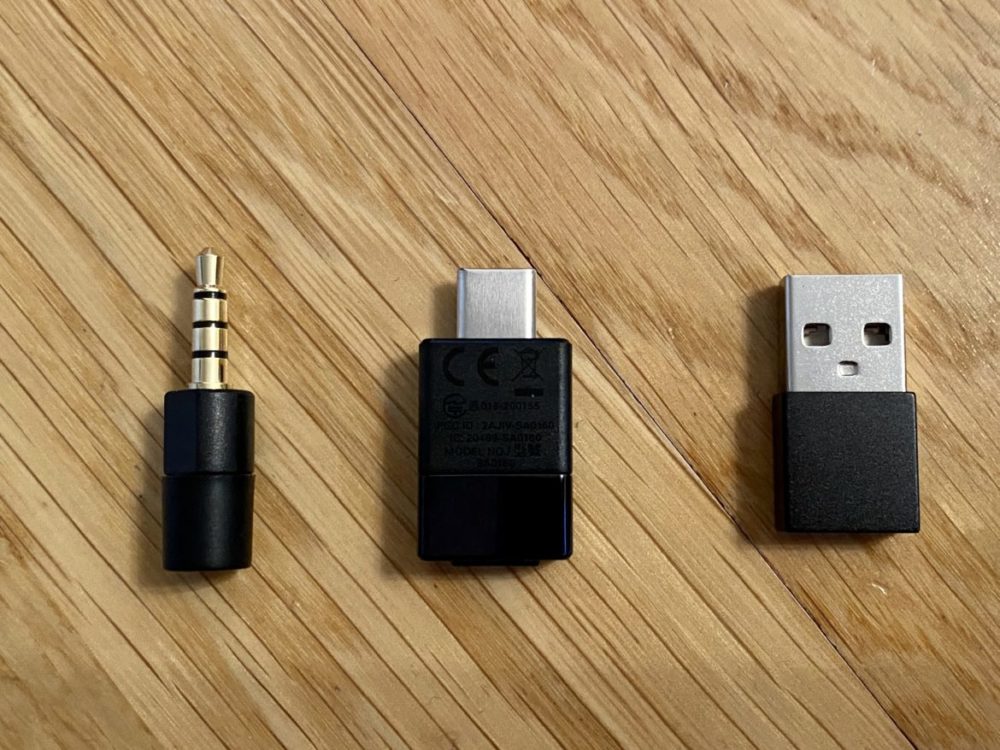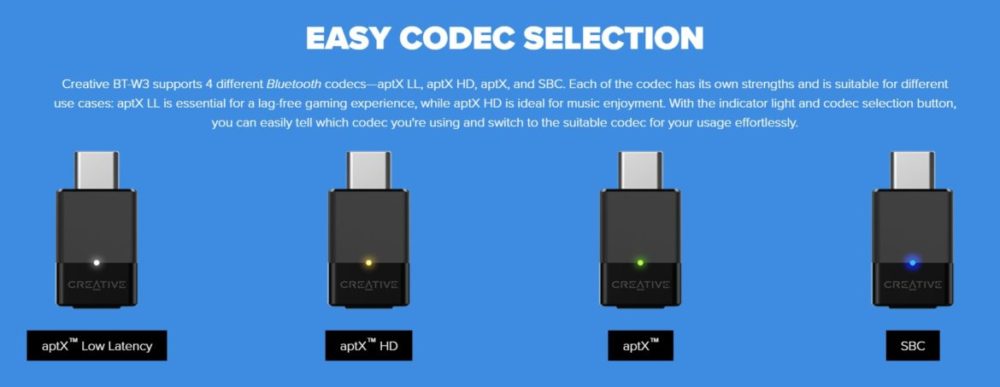TL;DR
Unlock superior wireless audio with the Creative BT-W3, a USB dongle that lets you choose between SBC, aptX, aptX HD, and aptX LL codecs. AptX HD delivers near CD-quality sound, while aptX LL minimizes lag for gaming and movies. This compact device works with PC, Mac, PS4, and Nintendo Switch, but requires headphones that natively support these advanced codecs. If you're aiming for the best wireless sound and low latency, this dongle is a game-changer, but it shines brightest with compatible hardware. Dive into the full review to see if it's the upgrade your audio setup needs.
Beyond the technology and build quality of the headphones themselves, the supported codec is a critical factor for wireless headphones. A codec decodes the digital Bluetooth stream and converts it to an analog signal perceptible to the human ear. SBC (Low-complexity subband codec) is a foundational codec, widely implemented and offering basic audio quality. It is universally supported, and while it may be considered the least advanced on paper, a well-engineered headphone utilizing SBC can outperform a less refined one employing more sophisticated codecs. Qualcomm’s aptX marked a significant improvement in Bluetooth audio. Currently, aptX HD and Sony LDAC are recognized as delivering superior audio reproduction. However, support for these formats remains limited to a subset of headphones and primarily modern Android phones. The Creative BT-W3 addresses this compatibility challenge.

aptX HD and aptX LL – a quick course
The Creative BT-W3 is a compact USB dongle that enables users to select between four modes: SBC (universally supported), aptX, aptX HD, and aptX LL. aptX LL, which stands for Low Latency, provides a faster mode optimized for gaming, mitigating audio synchronization issues in video content. While LDAC is not supported, it’s important to note that your headphones must natively support the aptX formats to realize any improvement in audio quality. The dongle plugs into the transmitting device.
Bluetooth, despite its evolution to generation 5, presents bandwidth limitations. Effective compression is vital to maximize audio quality within these constraints, requiring capable hardware for rapid and efficient decoding, analogous to streaming video and music. aptX enhances this process (subject to licensing from Qualcomm), delivering 16-bit/44.1kHz audio at a 4:1 compression ratio with a maximum bitrate of 352kbps. aptX HD elevates the standard to near “CD-like quality,” offering 24-bit/48kHz audio with a 4:1 compression ratio, reaching a maximum of 576kbps. aptX LL prioritizes speed over subtle nuances in quality, generally matching aptX (16bit/44.1kHZ) quality but emphasizing low latency crucial for gaming and movies, where real-time audio-visual synchronization is paramount.
In summary: 1) aptX offers improved quality over SBC, 2) aptX HD is well-suited for audiophiles prioritizing audio fidelity over minimal lag, and 3) aptX LL caters to gamers and streaming video enthusiasts sensitive to lip-sync issues (demonstrated in the video below).

Finding headphones with simultaneous support for both aptX HD and aptX LL can be challenging. The Panasonic RP-HD605 stands out as a versatile option in the mid-price segment, as highlighted in our headphone archive; however, it supports aptX HD but not LL (each aptX format necessitates its own license and dedicated hardware support). The recently released Sennheiser Momentum True Wireless 3 incorporates aptX LL, but omits aptX HD (a comprehensive review of the Sennheiser headphones is forthcoming). For the purposes of this review, both models will serve as references.
The Creative BT-W3 is compatible with PS4, Nintendo Switch, PC, and Mac, but not Xbox One or smartphones (iPhones lack USB-C, and Android devices typically have these codecs natively). The dongle features a USB-C interface and includes a USB-A adapter for PS4 and computers utilizing the older USB Type-A ports.
The package also contains a 3.5″ microphone for users of wireless headphones without integrated microphones (a less common scenario). The headphones pair directly with the transmitter, eliminating the need to re-pair when switching the transmitter between consoles. The wireless microphone connection can present some complexity, as the Switch’s Bluetooth architecture cannot manage simultaneous bidirectional audio, requiring specific firmware configurations for its operation. The focus of this evaluation is the sound quality achievable with the dongle connected.

Initial setup is straightforward: connect the USB dongle to the desired transmitting device and set your headphones to pairing mode. The audio mode is selected by cycling through the modes, as indicated by the LED on the transmitter:
SBC (blue) – Serves as the baseline codec, representing standard Bluetooth audio quality. It exhibits the highest latency, occasionally noticeable as a lag between audio and visuals in demanding games (e.g., Doom Eternal).
aptX (green) – Offers a tangible improvement, particularly in bass response. The sound is tighter and richer, but the enhancement over SBC is not dramatic.
aptX HD (yellow) – Represents a significant upgrade in audio fidelity. The soundstage expands, exhibiting greater warmth and improved resolution, consistent with its technical specifications.
aptX LL (white) – Low Latency provides the most compelling advantage if supported by the connected headphones (typically 2020 models or select high-end 2019 devices). By prioritizing speed over processing (similar to Game Mode on OLED displays), audio richness is slightly reduced compared to aptX HD, but the resulting near-instantaneous signal transmission (32-40ms delay) is virtually indistinguishable from wired headphones. This is a notable achievement.
Note: Qualcomm’s aptX Adaptive utilizes AI to dynamically optimize the aptX mode based on the audio signal. While a relatively new technology, it may evolve into a dynamic standard, akin to intelligent HDR. However, it requires support from both the transmitter and receiver.

The primary benefit of the Creative BT-W3 lies in enhanced sound quality. The argument for “wirelessness” achieved by replacing a short cable may be less compelling, as many headphones connect directly to controllers on PS4 or Xbox One, or directly to the Switch in portable mode. However, the BT-W3 can elevate audio quality and reduce wireless latency, provided compatible headphones are used. This compatibility represents a current limitation, but it will become less significant as more headphones with aptX LL support enter the market. The Sennheiser Momentum Wireless 3 delivers strong audio performance, making it a recommended choice when minimizing latency is a priority (even if aptX HD provides a marginally richer sound profile).
At a price point of approximately 600 SEK, the Creative BT-W3 may not be essential for the average user. The improvement in sound quality isn’t as pronounced as that offered by the Play! 3 sound card. However, for users seeking optimal wireless audio performance with compatible headphones, the BT-W3 represents a worthwhile investment.

